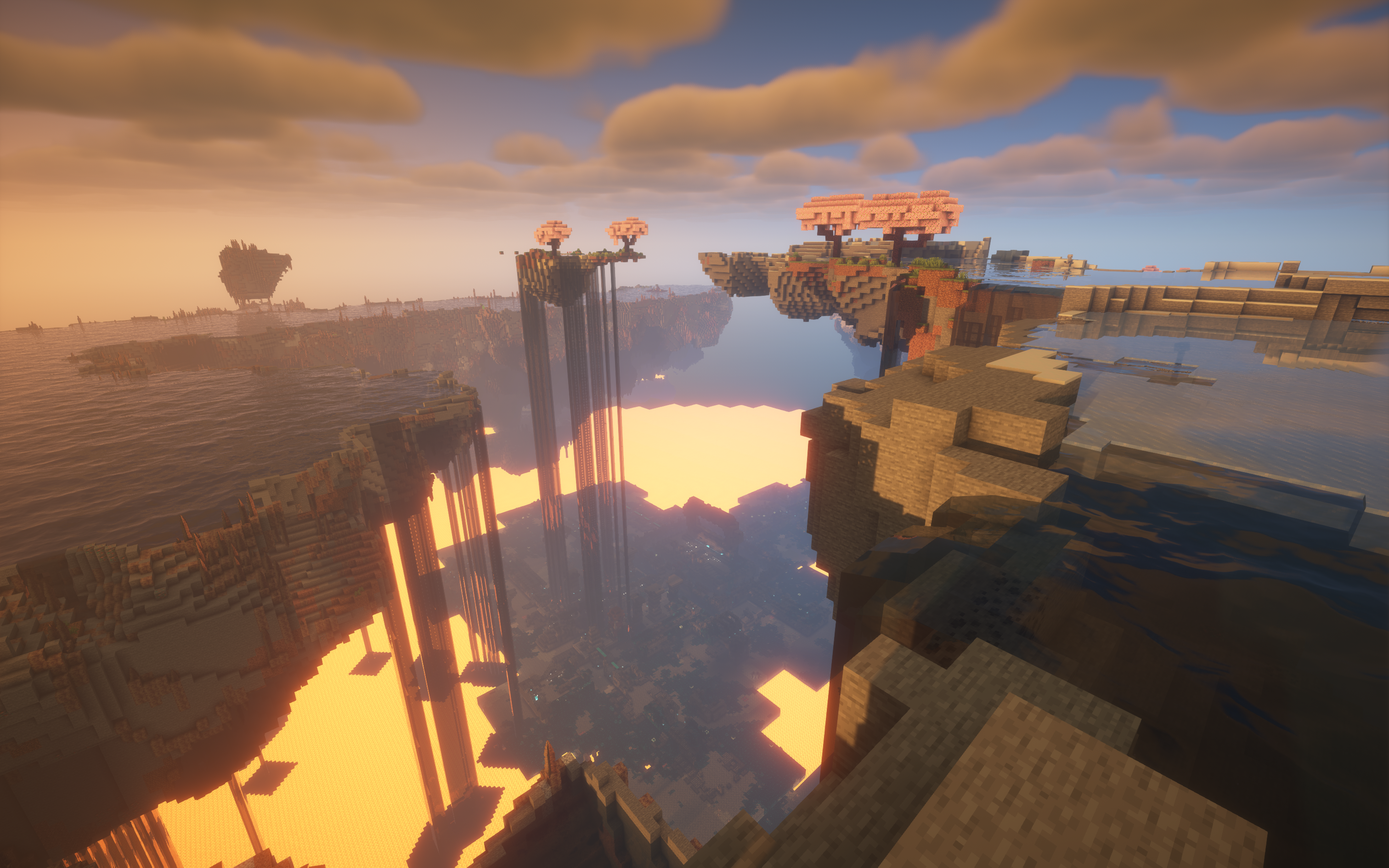ChunkGenerators
From version 1.3.0 onwards, Circumflex provides some ChunkGenerators to ease the process of creating one.
CustomNoiseChunkGenerator
CustomNoiseChunkGenerator allows you to create a NoiseChunkGenerator with custom noise configuration from within code. While configuring NoiseChunkGenerator is possible entirely within datapacks (see https://minecraft.wiki/w/Noise_router), doing it within code allows for greater customisability.
Example
First, create the chunk generator by extending CustomNoiseChunkGenerator:
public class MyChunkGenerator extends CustomNoiseChunkGenerator {
public static final MapCodec<MyModChunkGenerator> CODEC =
RecordCodecBuilder.mapCodec((instance) -> {
return instance.group(
BiomeSource.CODEC.fieldOf("biome_source").forGetter(MyChunkGenerator::getBiomeSource),
ChunkGeneratorSettings.REGISTRY_CODEC.fieldOf("settings")
.forGetter(MyChunkGenerator::getSettings))
.apply(instance, instance.stable(MyChunkGenerator::new));
});
public MyChunkGenerator(BiomeSource biomeSource,
RegistryEntry<ChunkGeneratorSettings> settings) {
super(biomeSource, settings);
}
@Override
protected MapCodec<? extends ChunkGenerator> getCodec() {
return CODEC;
}
@Override
public NoiseConfig wrapNoiseConfig(NoiseConfig noiseConfig) {
// this replaces the final density function - see https://minecraft.wiki/w/Noise_router
noiseConfig.noiseRouter = new NoiseRouterBuilder(noiseConfig.getNoiseRouter())
.finalDensity(DensityFunctionTypes.mul(
DensityFunctionTypes
.noise(CircumflexHelpers.noiseParameters(NoiseParametersKeys.GRAVEL), 1, 1),
DensityFunctionTypes
.noise(CircumflexHelpers.noiseParameters(NoiseParametersKeys.CAVE_CHEESE), 1, 1)))
.build();
return noiseConfig;
}
}
Then, register the codec (this can be done using registry initializers):
public class MyModChunkGenerators extends ChunkGeneratorRegistryInitializer {
public static final MapCodec<? extends ChunkGenerator> myChunkGenerator = MyChunkGenerator.CODEC;
}
public class MyMod implements ModInitializer {
public static final String MOD_ID = "mymod";
public static final Logger LOGGER = LoggerFactory.getLogger(MOD_ID);
@Override
public void onInitialize() {
RegistryInitializer.register(MyModChunkGenerators.class, MOD_ID);
}
}
Finally, you need some way to use the chunk generator. One way to do this is by creating a world preset for it, adding it to the world preset tag, and providing a translation for it.
{
"dimensions": {
"minecraft:overworld": {
"type": "minecraft:overworld",
"generator": {
"type": "mymod:my_chunk_generator",
"settings": "minecraft:overworld",
"biome_source": {
"type": "minecraft:multi_noise",
"preset": "minecraft:overworld"
}
}
}
}
}
Note that the following file is under the Minecraft namespace, not your mod's:
{
"replace": false,
"values": ["mymod:my_world_preset"]
}
This is optional:
{
"generator.mymod.my_world_preset": "My World Preset"
}
Now, upon launching Minecraft, you should be able to change the world preset to the one you've just added.
The example chunk generator given earlier produces something like the following:
